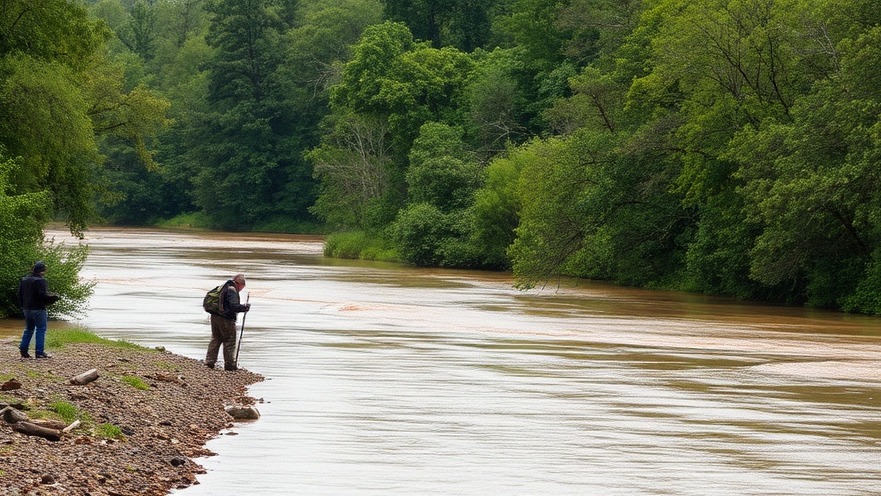
The Ongoing Impact of July Fourth Floods in Texas
As the shocking aftermath of the July Fourth floods continues to unfold, Texas is grappling with the harrowing reality of a devastating natural disaster. More than ten days have passed since the floodwaters surged along the Guadalupe River, leaving communities in Kerr County and surrounding areas in disarray. An alarming death toll has risen to at least 132, with over 100 individuals still unaccounted for, raising grave concerns among residents, officials, and families impacted by this tragedy.
The Difficulty of Tracking Missing Persons
With an estimated 101 people missing, determining an accurate count is proving to be a complex challenge for authorities. Governor Greg Abbott highlighted that many individuals who were present around the Guadalupe River during the holiday weekend did not register at local accommodations, further complicating the search. Sheriff Larry Leitha's assertion that the search efforts could extend up to six months underscores the uncertainty surrounding the fate of those still unlocated.
Adaptive Strategies Amid Disaster Recovery
The recovery process is daunting, as officials scoured through massive debris piles looking for signs of missing persons. The adverse weather conditions leading up to the flood played a significant role in the catastrophe. Heavy rain triggered the Guadalupe's swelling, resulting in swift currents that swept away everything in their path. In facing this, recovery teams are employing thorough and meticulous search tactics, proving that even in darkness, hope can shine through human resilience and dedication.
Emotional Repercussions on Survivors and Families
The human toll of this flooding is not just quantified in numbers. For families, the anguish of awaiting news about their loved ones can be overwhelming. Kerr County Judge Rob Kelly echoed the emotional weight of the situation by expressing the county’s commitment to alleviating uncertainty while also grappling with the unknown. As reports of missing persons mount, the emotional strain on local communities is palpable, affecting not just immediate families but the entire region.
Local and State Response to the Crisis
Local leaders, including Gov. Abbott, emphasized the importance of responding promptly and efficiently in managing this natural disaster. The collaboration between state and local emergency agencies is paramount in addressing both the immediate needs of those affected and the long-term recovery plan going forward. With reports about the evolving numbers of missing persons being registered daily, communication channels must remain open to ensure transparency and build trust among the affected population.
Future Predictions: Lessons Learned from the Disaster
What can be gleaned from this disaster is the pressing need for better systems to track visitors during peak seasons in tourist-heavy areas like Kerr County. Such improvements could prove invaluable in future emergencies to secure swift and effective crisis management. Community preparedness and infrastructure resilience must be prioritized to safeguard against similar calamities in the future.
Reflecting on the Community's Strength
The outpouring of support from volunteers and relief workers is testament to community spirit and solidarity in the wake of a tragedy. As the search continues, citizens are reminded of the bonds that form in times of hardship. The ongoing efforts to recover and rebuild will likely cement a profound sense of loyalty and shared purpose among residents.
Conclusion: A Call to Support Recovery Efforts
In times of crisis, your support can make a significant impact. Consider contributing to recovery efforts or volunteering to assist local organizations that are directly involved in helping those affected. Together, we can foster resilience, provide hope, and forge a path towards recovery for this community during these challenging times.
 Add Element
Add Element  Add Row
Add Row 



Write A Comment